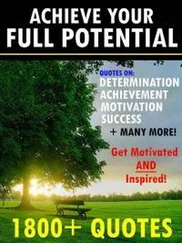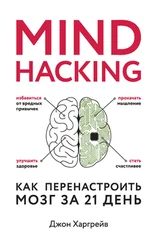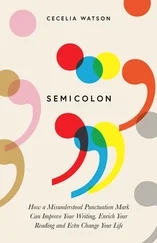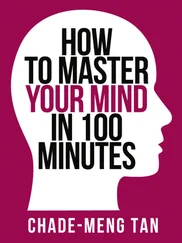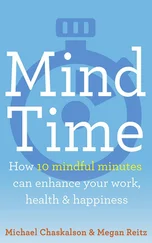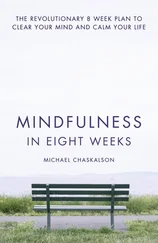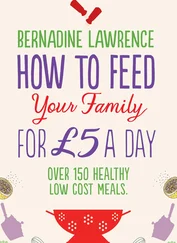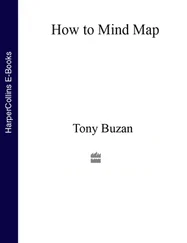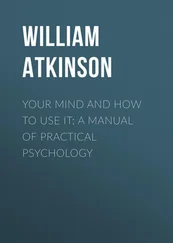6. Bruce Grierson, “What if Age Is Nothing but a Mind-Set?” New York Times , Oct. 22, 2014, http://www.nytimes.com/2014/10/26/magazine/what-if-age-is-nothing-but-a-mind-set.html.
2.2 Your Best Possible Future
1. Robert and Michele Root-Bernstein, Sparks of Genius: The Thirteen Thinking Tools of the World’s Most Creative People (Boston: Mariner Books, 2001), 22.
2. Laura King, “The Health Benefits of Writing about Life Goals,” Personality and Social Psychology Bulletin 27, No. 7 (July 2001): 798–807.
3. Chad Burton and Laura King, “The Health Benefits of Writing About Intensely Positive Experiences,” Journal of Research in Personality 2, No. 38 (April 30, 2004): 150–63.
4. Brad Stone, The Everything Store: Jeff Bezos and the Age of Amazon (New York: Little, Brown, 2013), 76.
5. Thank you to Tim Ferriss’s excellent book The 4-Hour Workweek (New York: Harmony, 2007) for the inspiration for these exercises.
6. Ray Dalio, Principles (Westport, CT: Bridgewater Associates, 2011), 14. Dalio has made this excellent book available online for free at http://www.bwater.com/Uploads/FileManager/Principles/Bridgewater-Associates-Ray-Dalio-Principles.pdf.
2.3 Creating Positive Thought Loops
1. Walter Isaacson, Benjamin Franklin: An American Life (New York: Simon & Schuster, 2004), 442.
2. Benjamin Franklin, The Autobiography of Benjamin Franklin (London: J. Parson’s, 1791), 38.
3. Jonathan Schultz, “Speed Camera Lottery Wins VW Fun Theory Contest,” New York Times , Nov. 30, 2010, http://wheels.blogs.nytimes.com/2010/11/30/speed-camera-lottery-wins-vw-fun-theory-contest.
4. Ed Nather, “The Story of Mel, A Real Programmer,” Usenet, May 21, 1983, https://www.cs.utah.edu/~elb/folklore/mel.html.
5. R. A. Emmons and M. E. McCullough, “Counting Blessings Versus Burdens: An Experimental Investigation of Gratitude and Subjective Well-Being in Daily Life,” Journal of Personality and Social Psychology 84, No. 2 (Feb. 2003), 377–38.
6. M. Scott Peck, The Different Drum: Community Making and Peace (New York: Touchstone, 1998), 220.
3.1 Write
1. “Thomas Edison,” National Park Service, http://www.nps.gov/edis/index.htm.
2. Randall Stross, The Wizard of Menlo Park: How Thomas Alva Edison Invented the Modern World (New York: Crown, 2008), 154.
3. “Obesity and Overweight Fact Sheet,” World Health Organization, Jan. 2015, http://www.who.int/mediacentre/factsheets/fs311/en.
4. “Adult Obesity Facts,” Centers for Disease Control and Prevention, Sept. 9, 2014, http://www.cdc.gov/obesity/data/adult.html.
5. Kaiser Permanente, “Keeping a Food Diary Doubles Diet Weight Loss, Study Suggests,” ScienceDaily , July 8, 2008, http://www.sciencedaily.com/releases/2008/07/080708080738.htm.
6. Jonah Lehrer, Imagine: How Creativity Works (Boston: Houghton Mifflin, 2012).
7. Richard R. Peabody was not trained as a medical doctor, but his reputation for helping so many alcoholics earned him the nickname “Dr. Peabody.”
8. Richard R. Peabody, The Common Sense of Drinking (Boston: Little, Brown, 1935), chapter 5.
9. Michael E. Gerber, The E-Myth Revisited: Why Most Small Businesses Don’t Work and What to Do About It (New York: HarperCollins, 2004).
10. Scott Ambler, “Just Barely Good Enough Models and Documents: An Agile Best Practice,” Agile Modeling , http://agilemodeling.com/essays/barelyGoodEnough.html.
11. Allen B. Downey, personal interview, Nov. 7, 2014.
12. Allen B. Downey, “Free Books, Why Not?” Green Tea Press , http://www.greenteapress.com/free_books.html.
13. Allen B. Downey, “The Textbook Manifesto,” Green Tea Press , Jan. 6, 2010, http://www.greenteapress.com/manifesto.html.
14. Richard Wiseman, 59 Seconds: Change Your Life in Under a Minute (New York: Anchor, 2010), 22.
3.2 Repeat
1. “Dilbert,” Universal Uclick , http://www.universaluclick.com/comics/dilbert.
2. “Cartoonist Scott Adams,” PBS, Nov. 6, 2013, http://www.pbs.org/wnet/tavissmiley/interviews/scott-adams.
3. Scott Adams , The Dilbert Future: Thriving on Business Stupidity in the 21st Century (New York: HarperBusiness, 1998), 246–53. Also see Scott Adams, How to Fail at Everything and Still Win Big: Kind of the Story of My Life (New York: Portfolio, 2014), 154–57 and 224–29. Also see Scott Adams, “Dilbert 2.0,” Scott Adams Blog , Oct. 13, 2008, http://blog.dilbert.com/post/102544366321/dilbert-2-0.
4. Ibid.
5. Ibid.
6. “Jim Carrey,” IMDB, http://www.imdb.com/name/nm0000120/bio.
7. Brad Isaac, “Jerry Seinfeld’s Productivity Secret,” Lifehacker , July 24, 2007, http://lifehacker.com/281626/jerry-seinfelds-productivity-secret.
8. F. Strack, L. L. Martin, and S. Stepper, “Inhibiting and Facilitating Conditions of the Human Smile: A Nonobtrusive Test of the Facial Feedback Hypothesis,” Journal of Personality and Social Psychology 54, No. 5 (1988), 768–77. Thanks to Richard Wiseman’s 59 Seconds: Change Your Life in Under a Minute (New York: Anchor, 2010) for this and the following study.
9. Simone Schnall and James D. Laird, “Keep Smiling: Enduring Effects of Facial Expressions and Postures on Emotional Experience and Memory,” Cognition and Emotion 17, No. 5 (2003): 787–97.
10. Dr. Joan Borysenko, Minding the Body, Mending the Mind (Cambridge, MA: Da Capo Press, 2007), 39.
3.3 Simulate
1. “List of Nikola Tesla Patents,” Wikipedia , Jan. 25, 2015, http://en.wikipedia.org/wiki/List_of_Nikola_Tesla_patents.
2. Charles Coulston Gillispie, “Tesla, Nikola,” Dictionary of Scientific Biography (New York: Charles Scribner’s Sons, 1975).
3. Nikola Tesla, “The Problem of Increasing Human Energy,” Century Illustrated , June 1900, http://www.tfcbooks.com/tesla/1900-06-00.htm.
4. Leslie E. Gilliams, “Tesla’s Plan of Electrically Treating Schoolchildren,” Popular Electricity Magazine, 1912, http://www.teslacollection.com/tesla_articles/1912/popular_electricity_magazine/e_leslie_gilliams/tesla_s_plan_of_electrically_treating_school_children.
5. “Beam to Kill Army at 200 Miles, Tesla’s Claim on 78th Birthday,” New York Times , July 11, 1934.
6. David Hatcher Childress, The Fantastic Inventions of Nikola Tesla (Kempton, IL: Adventures Unlimited Press, 2014), 276.
7. Tesla, “The Problem of Increasing Human Energy.”
8. “Tesla,” PBS, http://www.pbs.org/tesla/ll/ll_america.html.
9. Thomas Edison: Life of an Electrifying Man (Biographiq, 2008), 23.
10. Anderson, 1983; Anderson & Sechler, 1986; Carroll, 1978; Gregory, Cialdini & Carpenter, 1982; Hirt & Sherman, 1985; Sherman, Skov, Hervitz & Stock, 1981; Koehler, 1991; Pham & Taylor, 1999.
11. Shelley E. Taylor, Lien B. Pham, Inna D. Rivkin, and David A. Armor, “Harnessing the Imagination: Mental Simulation, Self-Regulation, and Coping,” American Psychologist 53, No. 4 (1998): 429–39.
12. Jack Nicklaus, Golf My Way (New York: Simon & Schuster, 1974), 79.
13. Alyssa Roenigk, “Lotus Pose on Two,” ESPN The Magazine , Aug. 21, 2013, http://espn.go.com/nfl/story/_/id/9581925/seattle-seahawks-use-unusual-techniques-practice-espn-magazine.
14. Michael Gervais, PhD, http://michaelgervais.com.
15. Sir John Hargrave, “Wisdom 2.0 2014: How the Seattle Seahawks Won the Super Bowl with Mindfulness,” Wisdom 2.0 , Feb. 2013, http://wisdom2conference.tumblr.com/post/76899593413/wisdom-2-0-2014-how-the-seattle-seahawks-won-the-super.
Читать дальше
![Джон Харгрейв Mind Hacking [How to Change Your Mind for Good in 21 Days] обложка книги](/books/404192/dzhon-hargrejv-mind-hacking-how-to-change-your-min-cover.webp)

